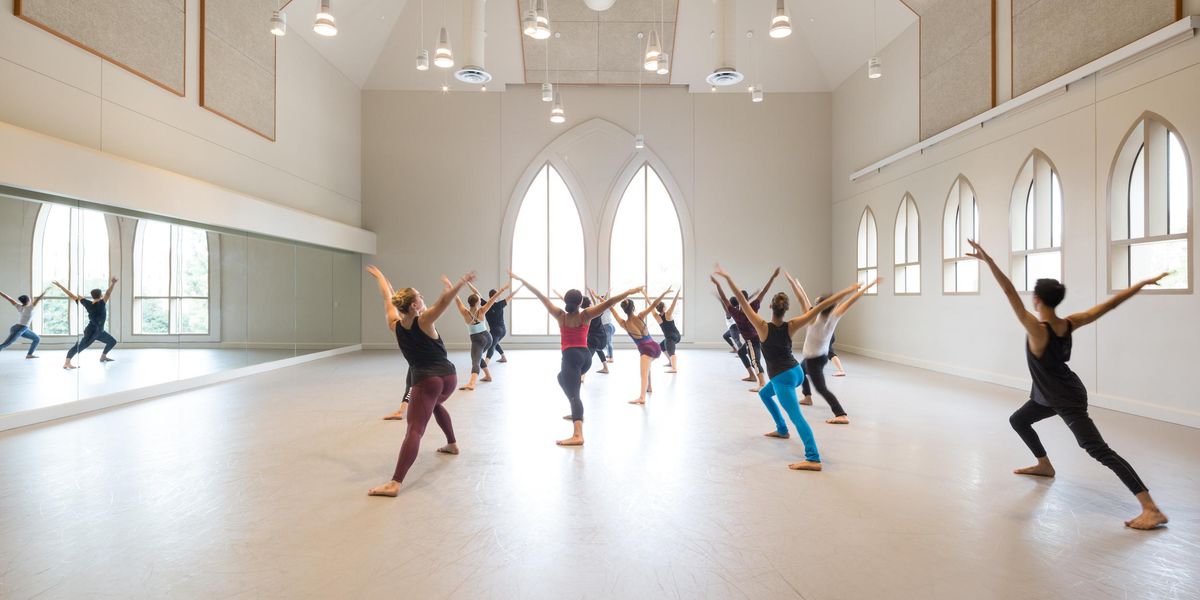Thodos Dance Chicago
Harris Theater for Music and Dance
Chicago, IL
March 2–3, 2012
Performance reviewed: March 3
Any excuse for a party these days, right? But Thodos Dance Chicago’s 20th-anniversary winter concert was oddly dispiriting, looking back more than forward. The two most recent works by artistic director Melissa Thodos debuted a year ago, and one was a remake of a 1988 solo. Two other Thodos dances, both from the 90s, and a 2011 piece by company members completed the low-key program.
Thodos’ knack for spectacle enhances the splashy, full-ensemble, one-act The White City: Chicago’s Columbian Exposition of 1893, choreographed in 2011 with Broadway vet Ann Reinking and set against film projections by Chris Olsen. But some questionable choices make this 45-minute piece sputter and stall.
Taking a page from Erik Larson’s densely woven 2003 nonfiction book “The Devil in the White City: Murder, Magic, and Madness at the Fair That Changed America,” Thodos and Reinking included many plots—too many for a single dance. In a case of less would have been more, they squandered the potential impact of a more focused approach to idealism and its loss.
Thodos’
The White City. Photo by Cheryl Mann, Courtesy TDC.
A 13-scene libretto in the program rendered The White City comprehensible. But the literal-mindedness of these descriptions infects the choreography, which communicates the stories’ bare bones and not much else. Here is architect John Root on his deathbed—a maid feels his forehead and recoils in alarm—seeing a burst of white light, projected behind him. Here are happy people marveling at the fair, pointing their fingers—over and over. Bruce Wolosoff’s music for string quartet appropriately samples American popular idioms but is too upbeat to underscore the tragedies of madness, murder, and dashed dreams.
The scenes that work best in The White City pack a visual wallop: a group of architects whirls and vaults on and over a long table, a kidnapped girl clambers up the walls of her dungeon-like cell. But we’ve seen these devices before, in Kurt Jooss’ The Green Table and numerous dances in closely confined boxes.
Props have often driven Thodos’ work, including the 1988 solo Reaching There, reincarnated last year as the trio Getting There. A waist-high ring wide enough to stand on is shown mostly from the angle that makes it look like a narrow tube. Snapshot lighting at the beginning enhances the wow factor: look, they’re standing on a hula hoop! The effect is circus-like, especially given The XX’s music (also used to promote the 2010 Olympics).
Thodos’ bigger, prop-less ensemble works can get muddy. Despite a hyper-simplified vocabulary of runs, turns, and extended arms in the 1996 octet Piece of Peace (Part I), it remained shapeless. The 1992 nonet Chant is more sophisticated, with plenty of canon sequences. But spacing that obscured the groups and a general lack of true unison—an issue throughout the evening—made for chaos.
The 2011 octet Exurgence, by company members Jeremy Blair and Mollie Mock Kaufman, looked much more crisp. Strappy black costumes suggested sexy gladiators, boys against the girls, and the featured dancer (Kaufman) was decisively set apart, especially in her final empowered gesture: removing the blinders of her hands from her own eyes. Structure and clarity: it’s a combination Thodos Dance should try more often.
Pictured at top: Thodos’
Getting There. Photo by Cheryl Mann, Courtesy TDC.




